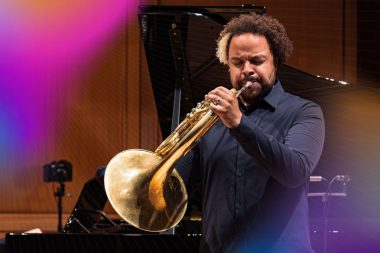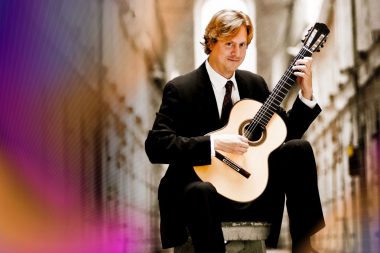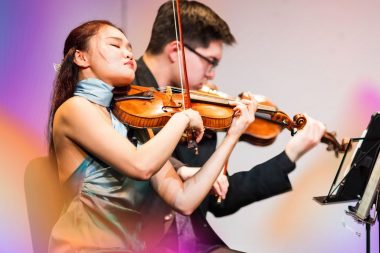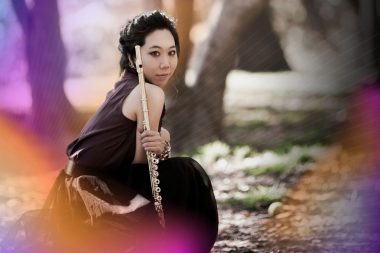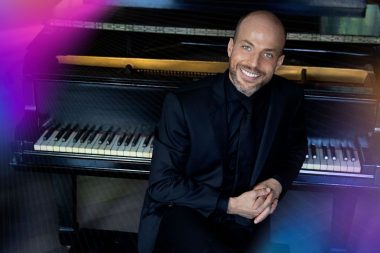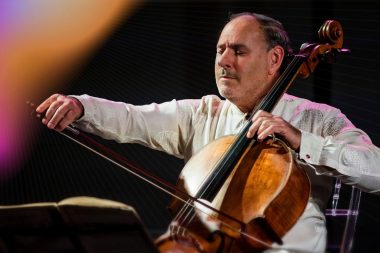CLAUDE DEBUSSY: SONATA FOR VIOLIN AND PIANO IN G MINOR
In his drive to unshackle music from old rules, Claude Debussy (1862-1918) avoided the formal traditions of symphonies and concertos, which made his late-career turn toward sonatas all the more surprising. He completed two—the Cello Sonata and the Sonata for Flute, Viola and Harp—during a summer vacation in 1915, and he returned to the form in 1917, producing the Sonata for Violin and Piano in G Minor. His performance of it that September turned out to be his last public concert, when he was already suffering from the rectal cancer that ended his life in 1918, leaving three other planned sonatas unfinished.
The Violin Sonata distills Debussy’s signature sound into a lean, precise language that observes the spirit if not the letter of sonata-form rules. As expected in the first movement, the home key of G-minor returns after an excursion to a contrasting key, but the original themes come back fragmented and transformed by their contact with the opposing material. There is no slow movement, just a middle movement defined as an Intermezzo, with a tempo indication of “fanciful and light.” Again there is a sense of transformation within the brief span of the movement, with the biting, scherzo-like opening material becoming more gracious by the end. The finale awakens gradually, and it moderates its exuberance with lyrical passages and capricious mood changes, only reaching maximal intensity in the closing measures.
EUGÈNE YSAŸE: RÊVE D’ENFANT, OP. 14
At the dawn of the twentieth century, the Belgian violinist Eugène Ysaÿe (1858-1931) had an international career that few musicians could rival, spanning from the United States to Russia. The years he had trained in Paris and his ongoing friendships with major French composers meant that, in his own concert showpieces, Ysaÿe followed the Gallic fashion of valuing beautiful sound and heartfelt expression over formal rigor and technical flash. While on tour and fretting about the well-being of his six-year-old son who had been ill, Ysaÿe penned this sweet and simple Rêve d’enfant (“Child’s Dream”).
FRITZ KREISLER: RECITATIVO AND SCHERZO-CAPRICE, OP. 6
A violin virtuoso of the highest order, Austria’s Fritz Kreisler (1875-1962)was also a mischievous and chameleon-like composer. The music he prepared for his own recital repertoire blurred boundaries between arrangements of existing pieces from the eighteenth century, original works of his own that he attributed to long-forgotten composers (like his often-played Praeludium and Allegro, credited falsely to one Gaetano Pugnani), and a small number of compositions that he printed under his own name, including the Recitativo and Scherzo-Caprice, his Opus 6. When he arranged this showpiece for solo violin to be published in 1911, he dedicated it to Eugène Ysaÿe, “maestro and friend.” Kreisler’s label for the first section borrowed an idea from opera, in which speech-like phrases are delivered without a steady pulse. In practice, this free-flowing introduction full of double-stops, trills and other advanced techniques functions as a cadenza. The quick second part lives up to its heading: “Scherzo” suggests joking, and “Caprice” promises whimsy and a healthy dose of virtuosity.
When Bach crafted his monumental set of six pieces for solo violin, he divided them into French-style Partitas, based on dance forms, and Italian-style Sonatas, built from abstract movements that were suitable to be played in a church. It was an encounter with Bach’s solo violin music that inspired Eugène Ysaÿe to create his own set of six sonatas for unaccompanied violin in 1923, with each one dedicated to a peer. For the Sonata for Solo Violin in E Minor (Op. 27, No. 4), he returned the favor and dedicated it to his friend Fritz Kreisler, and he also seemed to wink at Kreisler’s faux-Baroque compositions by crafting a piece that could almost blend in with authentic eighteenth-century repertoire. Borrowing from the old French custom, the free-flowing prelude loosely tracks an Allemande, a German-style dance. A telltale motive of four notes, played in reverse order, becomes the recurring foundation of the Sarabande, a dance imported from Spain. The Baroque-style patterns and passagework of the Finale echo the perpetual motion fireworks of that fishy Allegro by “Pugnani.”
EUGÈNE YSAŸE: SONATA FOR SOLO VIOLIN IN E MINOR, OP. 27 NO. 4
TESSA LARK: YSAŸE SHUFFLE
Following in the footsteps of Ysaÿe and Kreisler, Tessa Lark (b. 1989) uses her instrumental virtuosity as a conduit for composing violin showstoppers. In her Ysaÿe Shuffle, she uses a lick from the Belgian composer’s Fourth Sonata as a point of departure, veering quickly into the fiddle techniques she honed growing up in Kentucky. As she explained in an interview for a performance broadcast on PBS, “shuffle is just a term that fiddlers use for a repetitive bowing pattern. And so I use all sorts of different shuffle patterns to take Ysaÿe’s motive and change it around into a more fiddly-style piece.”
CÉSAR FRANCK: SONATA FOR VIOLIN AND PIANO IN A MAJOR
Belgium’s César Franck (1822-1910) is best known for three late pieces of chamber music: the Piano Quintet (1879), Violin Sonata (1886) and String Quartet (1890). He was also a beloved teacher at the Paris Conservatory, and his chamber music shaped French style for generations to come, not least the works of Debussy and Ravel.
The Violin Sonata in A Major, composed for fellow Belgian Eugène Ysaÿe, opens with an understated Allegretto ben moderato movement, setting a relaxed and tuneful atmosphere for the work. In the fast movement that follows, the piano introduction demonstrates the demanding nature of a part that is no mere background accompaniment. Franck’s piano writing matched his own virtuosity as a performer at the keyboard, aided by his exceptionally large hands that most other pianists have to manage without.
In the slow third movement, a free recitative leads into a dramatic Fantasy. Bookending the first movement, the Sonata returns to a modest pace for the finale, marked Allegretto poco mosso. The musical technique of canon (in which one voice follows the other at a fixed distance, as in “Row, Row, Row Your Boat”) and the use of modal church harmonies bring out the music’s reverent and nostalgic qualities.


